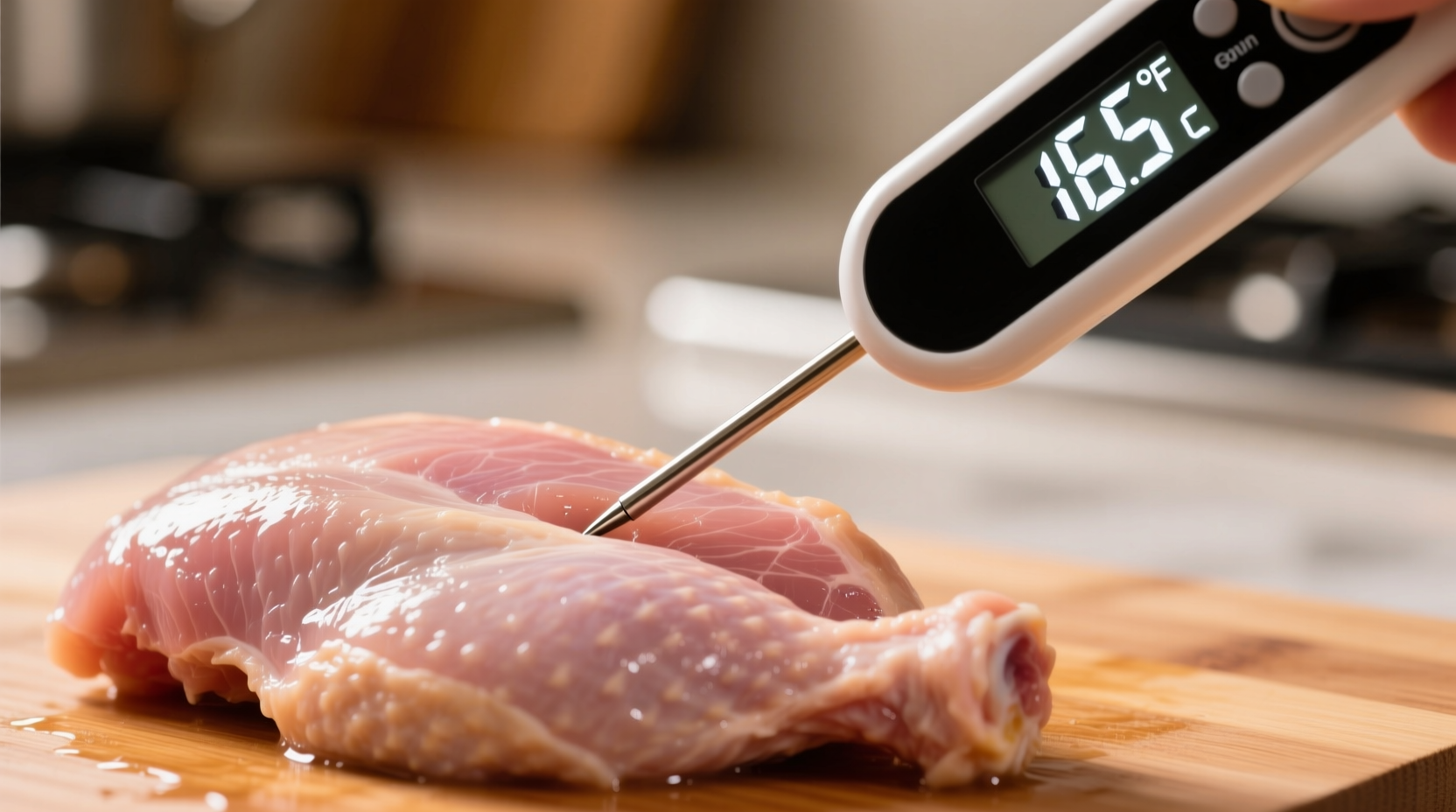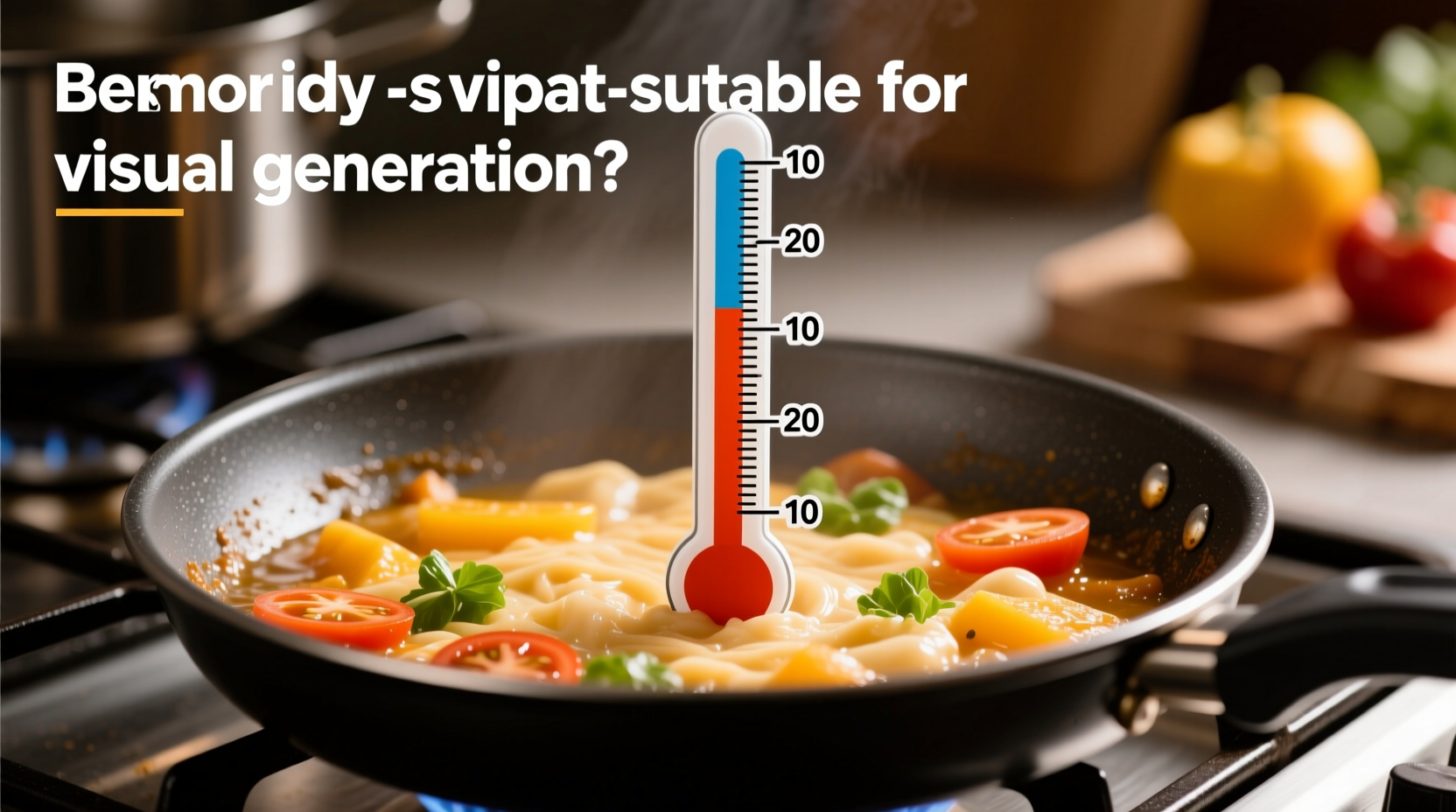Knowing the exact temperature for cooked chicken isn't just culinary precision—it's your primary defense against food poisoning. Each year, undercooked poultry causes millions of illness cases worldwide. This guide delivers the science-backed temperature standards you need, plus practical techniques to verify doneness every time you cook.
Why 165°F Is the Non-Negotiable Standard
The 165°F (74°C) threshold isn't arbitrary. At this precise temperature, harmful pathogens like Salmonella and Campylobacter that commonly contaminate raw chicken are instantly destroyed. The USDA's Food Safety and Inspection Service (FSIS) established this standard after extensive research on bacterial death rates at various temperatures.
| Temperature | Bacterial Destruction Time | Source |
|---|---|---|
| 165°F (74°C) | Instant | USDA FSIS |
| 160°F (71°C) | 14.8 seconds | Journal of Food Protection |
| 155°F (68°C) | 52.2 seconds | Journal of Food Protection |
| 150°F (66°C) | 2.8 minutes | Journal of Food Protection |
This evidence-based table shows why precise temperature matters. While lower temperatures can eventually kill bacteria, the margin for error in home cooking makes 165°F the only reliably safe standard for consumers. The USDA maintains this position because home cooks can't accurately time exposure at lower temperatures.
Proper Temperature Measurement Techniques
Simply knowing the target temperature isn't enough—you must measure correctly. Many foodborne illness cases occur because home cooks check temperature improperly.
Follow these professional measurement steps:
- Use a calibrated instant-read thermometer (not the pop-up thermometers that come with some whole chickens)
- Insert probe into the thickest part of the meat, avoiding bone, fat, or gristle
- For ground chicken products, check multiple spots as heat distribution varies
- Verify temperature in multiple locations for whole birds
- Clean thermometer with hot soapy water between measurements
Remember that chicken continues cooking after removal from heat (carryover cooking). For best results, remove chicken from heat at 160-162°F and let it rest—the temperature will rise to the safe 165°F mark during resting.

Context Boundaries: When Temperature Standards Apply Differently
While 165°F is the universal standard for immediate consumption, certain specialized cooking methods create important context boundaries:
- Sous vide cooking: Chicken can be safely cooked at lower temperatures (145°F/63°C) for extended periods (at least 30 minutes) as verified by the FDA Food Code Appendix A
- Commercial settings: Restaurants following HACCP plans may use lower temperatures with precisely controlled time-temperature combinations
- Leftovers: Previously cooked chicken being reheated must reach 165°F again
For home cooking without specialized equipment, the 165°F standard remains essential. The FDA Food Code explicitly states: "Poultry—including ground chicken and turkey—must be cooked to 165°F as measured with a food thermometer."
Common Temperature Mistakes and How to Avoid Them
Even when aiming for 165°F, home cooks frequently make these critical errors:
- The visual doneness myth: Chicken can appear white and juices running clear while still below safe temperatures. Only a thermometer provides certainty.
- Improper thermometer placement: Checking near the bone (which conducts heat faster) gives falsely high readings.
- Not calibrating thermometers: Digital thermometers can drift over time. Test in ice water (should read 32°F/0°C) or boiling water (212°F/100°C at sea level).
- Insufficient resting time: Removing chicken too early prevents carryover cooking from reaching the safety threshold.
Consequences of Undercooked Chicken
Serving chicken below 165°F risks serious health consequences. According to CDC data, Salmonella causes approximately 1.35 million infections, 26,500 hospitalizations, and 420 deaths in the United States annually, with undercooked poultry as a primary source.
Symptoms of foodborne illness typically appear 6-48 hours after consumption and include:
- Nausea and vomiting
- Diarrhea (sometimes bloody)
- Abdominal cramps
- Fever and chills
- Headache and body aches
Vulnerable populations—including young children, elderly adults, pregnant women, and immunocompromised individuals—face significantly higher risks of severe complications.
Practical Temperature Verification Checklist
Make food safety routine with this simple verification process:
- Before cooking: Calibrate your thermometer
- During cooking: Insert thermometer in thickest part, away from bone
- At target temperature: Verify 165°F in multiple locations
- After cooking: Clean thermometer immediately with hot soapy water
- For leftovers: Reheat to 165°F before consuming
Invest in a high-quality instant-read thermometer with a response time under 3 seconds. The Thermapen ONE and ThermoPro models consistently receive top ratings from America's Test Kitchen for accuracy and speed.
Food Safety Evolution Timeline
Understanding how chicken temperature standards developed provides context for today's guidelines:
- 1970: USDA initially recommended cooking poultry to 180°F based on older research
- 1995: Research showed pathogens destroyed at lower temperatures; recommendation lowered to 170°F
- 2006: USDA FSIS updated guidelines to 165°F after confirming instant destruction of pathogens at this temperature
- 2011: FDA Food Code formally adopted 165°F standard for retail and foodservice
- Present: 165°F remains the universal consumer guideline despite sous vide and precision cooking advancements
This evolution demonstrates how food safety standards adapt to scientific advances while prioritizing consumer protection. The current 165°F standard represents the optimal balance between safety and practicality for home cooks.
Final Verification Before Serving
Before serving any chicken dish, perform this quick safety check:
- Has the thickest part reached 165°F?
- Did you verify in multiple locations for larger cuts?
- Have juices run clear for at least 15 seconds after piercing?
- Has the chicken rested for 3-5 minutes to complete cooking?
When in doubt, cook it out. Additional cooking time won't make chicken dangerously overcooked but undercooking can make someone dangerously ill.











 浙公网安备
33010002000092号
浙公网安备
33010002000092号 浙B2-20120091-4
浙B2-20120091-4